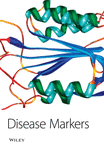Irregular Distortion of The Erythrocytes (Acanthocytes, Spur Cells) in Senile Dementia
Abstract
An excess of irregularly di storted red cells with spiked forms (acanthocytes. spur cells) has been found in a substantial minority of patient s with seni le dementia of Alzheimer type (7 of 50 patients, 3 of 21 men and 4 of 29 women). Of 100 control patients, 42 men and 58 women), 5 (men and 2 women) showed comparable distortion, but, of these, one man may well have incipient dementia and the others had serious organic di seases which may be associated with comparable erythrocytic changes. The cause of the distortion is not yet clear, but the presence of occasional giant erythrocytes in the absence of general macrocytosis suggests a possible abnormality of cell membrane synthes is. This distortion may be a useful marker in patients with loss of memory. Whether it is a manifestation of a haemopoietic clone or a constitutional anomaly associated with Alzheimer’s disease remains to be seen.




